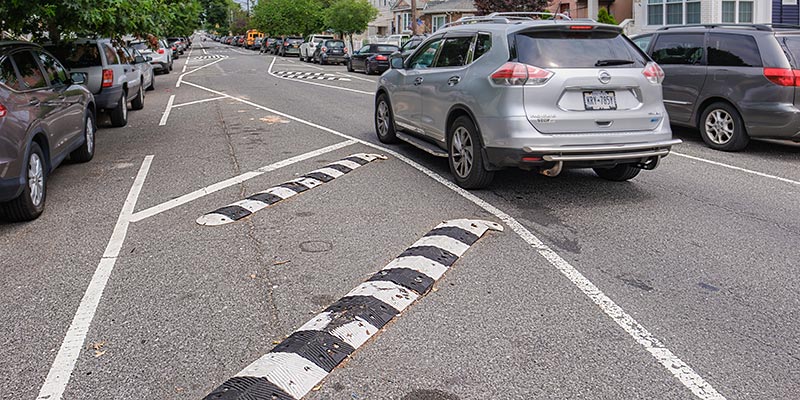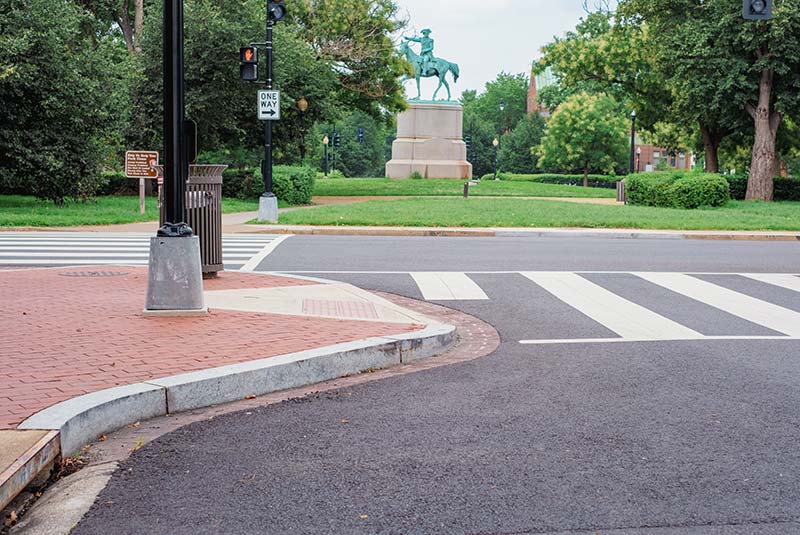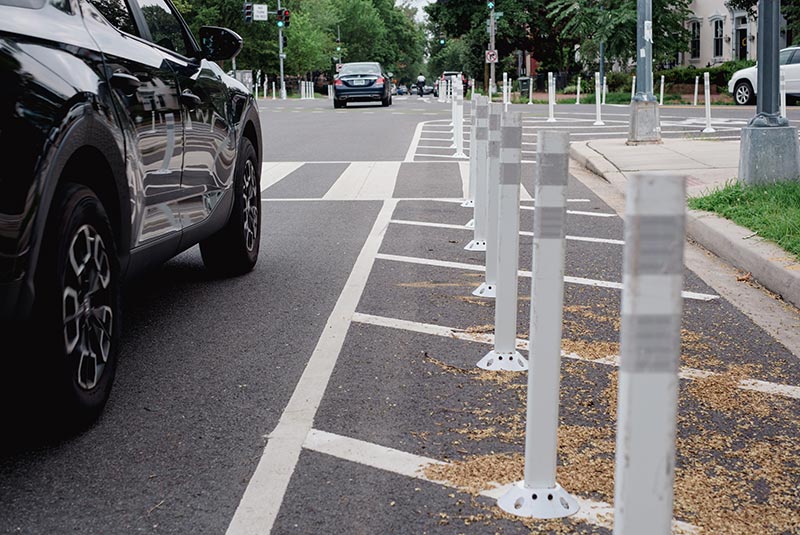Speed safety cameras, when used properly, can be an important tool for discouraging drivers from exceeding posted speed limits.
Most speed safety cameras measure the speed of a vehicle at a single spot. Fixed cameras use either radar or detectors embedded in the road surface to measure a vehicle’s speed. Mobile cameras are placed at the roadside in marked or unmarked police cars, containers, poles, etc., and use radar or laser to measure speeds. Some communities require mobile cameras to be manned. In either fixed or mobile systems, if a vehicle is traveling faster than a predetermined speed, the date, time, location and speed are recorded along with a photo of the vehicle.
More recent technology can measure average speeds over a certain distance. In this case, cameras located at two or more points record time-stamped images of all vehicles that pass them. Automatic license-plate recognition is used to match individual vehicles so that average speeds between the two points can be calculated. Time-stamped pictures of speeding vehicles are used as evidence of speeding. Point-to-point speed safety cameras have been used to enforce speed limits in countries such as Australia and the United Kingdom.
Speed safety cameras usually are programmed so they will not be activated unless a vehicle is traveling significantly faster than the posted limit — typically 10 or 11 mph faster, although in certain places such as school zones the tolerance may be lower.
Speed safety cameras can substantially reduce speeding on a wide range of roads. IIHS studies of cameras on residential roads in Maryland, on a high-speed roadway in Arizona and on city streets in the District of Columbia found that the proportion of drivers exceeding speed limits by more than 10 mph declined by 70%, 88% and 82%, respectively, six to eight months after cameras were introduced (Retting et al., 2008; Retting et al., 2008; Retting & Farmer, 2003).
An IIHS study in Montgomery County, Maryland, found that about 7½ years after the speed camera program began, the cameras were associated with a 10% reduction in mean speeds and a 62% reduction in the likelihood that a vehicle was traveling more than 10 mph above the speed limit on camera-eligible roads, almost all of which had cameras (Hu & McCartt, 2016).
A 2010 review published by the Cochrane Collaboration, an international public health organization, examined 35 studies from various countries. The authors concluded that speed safety cameras — including fixed, mobile, overt and covert devices — cut average speeds by 1%-15% and the percentage of vehicles traveling above the speed limits or designated speed thresholds by 14%-65% compared with sites without cameras (Wilson et al;. 2010).
Speed safety cameras have also been shown to reduce crashes and crash injuries. A 2009 study found that speed safety cameras could reduce injury crashes 47% on urban arterial roads (Shin et al., 2009). A study from Italy estimated that speed safety cameras could reduce fatal and injury crashes by 37% on urban expressways, freeways and principal arterials (Montella et al., 2014)
Speed safety cameras in Montgomery County were associated with an 8% reduction in the likelihood that a crash on a camera-eligible road was speeding-related and a 19% reduction in the likelihood that a crash involved an incapacitating or fatal injury (Hu & McCartt, 2016). A corridor approach, in which cameras were periodically moved along the length of a roadway segment, provided an additional 30% reduction in the likelihood that a crash involved an incapacitating or fatal injury over and above the effect of the cameras.
In its 2010 review, the Cochrane Collaboration summarized 28 studies that reported the effect on crashes and found reductions of 8%-49% for all crashes, 8%-50% for injury crashes and 11%-44% for crashes involving fatalities and serious injuries, in the vicinity of camera sites (Wilson et al., 2010). Over wider areas, the review found reductions of 9%-35% for all crashes, and 17%-58% for crashes involving fatalities and serious injuries. Reviewed studies with longer duration showed that these trends were either maintained or improved with time.
Speed safety cameras were in operation in 211 U.S. communities in 20 states and the District of Columbia during 2023, according to media sources and other public information tracked by IIHS, up from only four Arizona and Utah communities in 1995. Peoria, Arizona, and Paradise Valley, Arizona, were the first two communities to implement speed safety cameras in 1987. Cameras are currently used statewide in highway work zones in Arkansas, Connecticut, Illinois, Indiana, Maryland, New York, Oregon and Pennsylvania.
Trends in the number of U.S. communities with speed safety cameras
U.S. communities using speed safety cameras
Despite some vocal opposition, telephone surveys in jurisdictions with speed-camera programs show a majority of drivers support them.
A 2014 IIHS survey of 900 licensed drivers ages 18 and older residing in Montgomery County found that 62% of drivers favored automated speed enforcement on residential streets about 7½ years after camera ticketing began (Hu & McCartt, 2016).
A 2022 national survey of drivers ages 16 and older indicated that 43% supported the use of speed safety cameras to ticket drivers who travel more than 10 mph over the speed limit on residential streets (AAA Foundation for Traffic Safety, 2023).
A 2012 IIHS survey of 801 District of Columbia residents found strong support for speed safety cameras (Cicchino et al., 2014). D.C. has used speed cameras since 2001. In the survey, 88% of residents said that speeding was a serious threat to their personal safety. Seventy-one percent of residents who had driven a car in D.C. in the past month and 90% of residents who had not driven supported speed safety cameras.
In Scottsdale, Arizona, 63% of drivers surveyed prior to the start of automated enforcement said speed safety cameras should be used on an urban freeway where they were planned. After speed safety cameras were operational, 77% of drivers supported their use (Retting et al., 2008).
An automated enforcement program checklist published in 2021 by IIHS along with AAA, Advocates for Highway and Auto Safety, the Governors Highway Safety Association and the National Safety Council provides practical instructions for planning and implementing both red light camera and automated speed enforcement programs. The checklist aims to help communities follow best practices and maintain public support for the programs.
The U.S. Department of Transportation has its own guide, last updated in 2023, for planning and operating speed safety camera programs that improve safety and maintain reliability and accountability.




